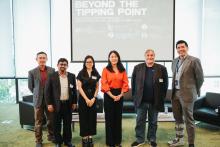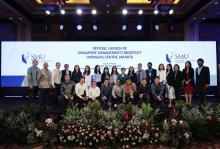Despite the growing urgency to bridge the gap between climate action goals and reality, much still has to be done. According to the UN Environment Programme Emissions Gap Report, emissions from 2023 put the world on a path to a temperature rise of around 2.7°C by 2100, almost twice the Paris Agreement goal of 1.5°C at the end of the century.
Asian cities like Singapore, Bangkok, Manila and Ho Chi Minh face very real risks of huge economic losses should their adaptation measures be inadequate. Singapore faces up to 20.2% gross domestic product (GDP) loss in a two-degree warmer scenario, a warning of how adversely megacities will be affected.
This article is featured in Special Feature: Raising Cities
The world is fast approaching its tipping point for climate change and current indications suggest this will happen sooner rather than later. A key target set in Paris in 2015 at the United Nations Climate Change Conference (COP21), aiming to limit the temperature increase to 1.5 degrees Celsius above pre-industrial levels, now seems like a pipe dream with scientists predicting that the limit will be reached in the 2030s.
Amid its diverse landscapes and cultures, Southeast Asian countries share a pressing environmental challenge - floods. Research by the ASEAN Risk Monitor and Disaster Management Review in 2020 showed that flooding is the most common disaster event in the region, with 13 percent of the ASEAN population exposed and USD 926 billion in capital stock at risk of damage.
The demand for talent in the field of sustainability is increasing, but the amount of expertise in the field is thin. As more nations take the step towards transitioning to greener and more sustainable economies, there is a need to develop workers with the necessary skills through a sustainability talent pipeline (a pool of candidates ready and equipped to take on the positions).
Last Update 05 June, 2023






